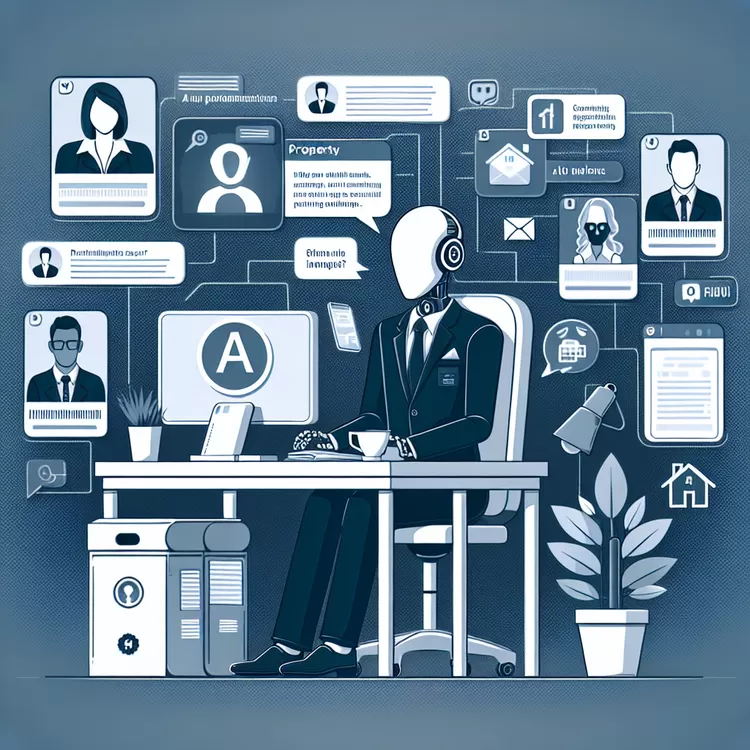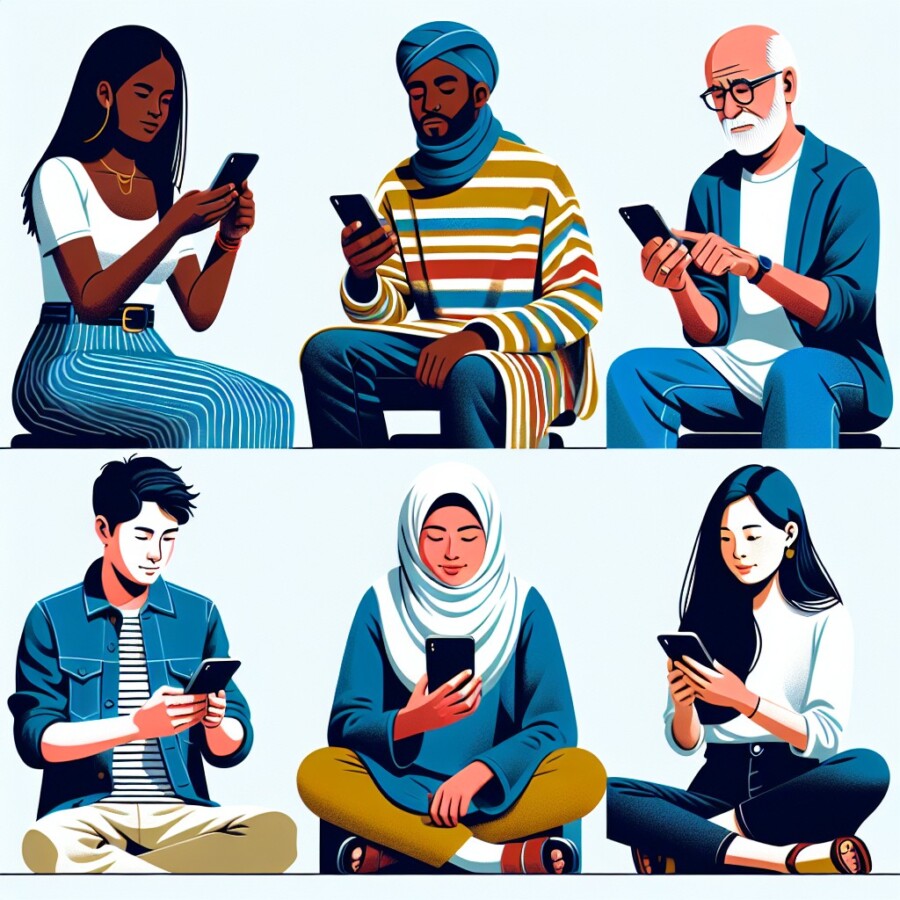A man named Rob Dix made a copy of himself on a computer that can talk to people on his website. This copy is very smart and can answer questions just like Rob would. Rob taught the copy by giving it his books and things he said on the radio. He is one of a few people who have made these smart copies with a company called Coachvox AI. There are other companies that make these copies too.
The reason people make these copies is so they can do more things at once. The copies can talk to people and help them, just like a real person. People show the copies what they have said before so the copies can learn. But some people who know a lot about this say we have to be careful. They say the copies are not as good as real people at understanding everything.
Original news source: The people creating digital clones of themselves (BBC)
Listen:
Slow
Normal
Fast
Vocabulary:
| 1 | copies | Things that look and act like a person |
| 2 | smart | Very clever and knows a lot of things |
| 3 | answer | To say something back when someone asks you something |
| 4 | questions | Things you want to know about |
| 5 | books | Things with words and pictures that you read |
| 6 | radio | Something you listen to that has music and talking |
| 7 | companies | Groups of people who work together to make things |
| 8 | people | Humans, like you and me |
| 9 | understand | To know what something means or how it works |
| 10 | everything | All the things in the world |
Group or Classroom Activities
Warm-up Activities:
– Charades
Instructions: Divide the class into two teams. Give each team a set of vocabulary cards related to the article (e.g. computer, smart copy, website, books, radio). One student from each team will take turns acting out the word on the card without speaking, while the rest of the team guesses what word it is.
– News Summary
Instructions: In pairs, students will take turns summarizing the main points of the article to their partner. They should try to include as much information as possible in a concise way. After both partners have shared their summaries, they can compare and discuss any differences or additional information.
– Vocabulary Pictionary
Instructions: Provide each student with a list of vocabulary words from the article. Students will take turns selecting a word and drawing a picture to represent it. The rest of the class will try to guess the word based on the drawing. Encourage students to use their imaginations and be creative with their drawings.
– Speed Summarizing
Instructions: Write a brief summary of the article on the board. Divide the class into pairs and give each pair a copy of the summary. Students will take turns reading the summary aloud to their partner as quickly as possible, trying to beat their previous time with each round. After a few rounds, ask students to share any challenges they encountered and discuss any strategies they used to read faster.
– Think-Pair-Share
Instructions: Ask students to individually think about and write down their opinion on the use of smart copies. Then, have students pair up and share their opinions with each other. After discussing, ask a few pairs to share their opinions with the whole class. Encourage students to ask questions and respectfully respond to each other’s opinions.
Comprehension Questions:
1. What did Rob Dix make on his computer?
2. How did Rob teach the copy to be smart?
3. What is the name of the company that helps make these copies?
4. Why do people make these copies?
5. What can the copies do to help people?
6. How do the copies learn?
7. Are the copies as good as real people at understanding everything?
Go to answers ⇩
Listen and Fill in the Gaps:
A man named Rob Dix made a copy of himself on a computer that can (1)______ to people on his website. This copy is very smart and can (2)______ questions just like Rob would. Rob taught the copy by giving it his books and things he said on the (3)______. He is one of a few people who have made these smart copies with a company called Coachvox AI. There are other (4)______ that make these copies too.
The reason people make these copies is so they can do more things at once. The copies can talk to people and (5)______ them, just like a real person. (6)______ show the copies what they have said before so the copies can learn. But some (7)______ who know a lot about this say we have to be careful. They say the copies are not as (8)______ as real people at understanding everything.
Go to answers ⇩
Discussion Questions:
Students can ask a partner these questions, or discuss them as a group.
1. What is a smart copy?
2. How would you feel if you could make a copy of yourself on a computer?
3. Do you think smart copies are helpful?
4. Why or why not?
5. What are some things that smart copies can do?
6. Do you like the idea of smart copies? Why or why not?
7. How do people teach smart copies to talk to people?
8. Do you think smart copies are as good as real people at understanding everything? Why or why not?
9. What other companies make smart copies?
10. Have you ever heard of Coachvox AI before?
11. What would you do if you had a smart copy to help you?
12. How do you think smart copies could be improved?
Individual Activities
Vocabulary Meanings:
Match each word to its meaning.
Words:
1. copies
2. smart
3. answer
4. questions
5. books
6. radio
7. companies
8. people
9. understand
10. everything
Meanings:
(A) All the things in the world
(B) To say something back when someone asks you something
(C) Groups of people who work together to make things
(D) Very clever and knows a lot of things
(E) Things you want to know about
(F) Something you listen to that has music and talking
(G) To know what something means or how it works
(H) Things that look and act like a person
(I) Things with words and pictures that you read
(J) Humans, like you and me
Go to answers ⇩
Multiple Choice Questions:
1. Who made a copy of himself on a computer?
(a) Rob Dix
(b) Coachvox AI
(c) The smart copy
(d) Other companies
2. What can the smart copy do?
(a) Play games on the computer
(b) Cook dinner
(c) Drive a car
(d) Talk to people and answer questions
3. How did Rob teach the smart copy?
(a) By taking it to school
(b) By watching movies together
(c) By giving it his books and things he said on the radio
(d) By playing outside
4. Why do people make these smart copies?
(a) So they can do more things at once
(b) So they can have a friend to play with
(c) So they can go on vacation
(d) So they can eat more ice cream
5. What is the name of the company that makes these smart copies?
(a) Rob Dix
(b) Coachvox AI
(c) The smart copy
(d) Other companies
6. What do some people say about the smart copies?
(a) They are better than real people at understanding everything
(b) They can fly like birds
(c) They can swim like fish
(d) They are not as good as real people at understanding everything
7. How do people show the smart copies what they have said before?
(a) By giving them new books to read
(b) By taking them to the park
(c) By talking to them and showing them old conversations
(d) By playing music for them
8. What is the main idea of the article?
(a) Computers are smarter than people
(b) People are making copies of themselves on computers
(c) People can do more things with the help of smart copies
(d) Smart copies are not as good as real people
Go to answers ⇩
True or False Questions:
1. There are other companies that also make these smart computer versions.
2. People make these computer versions so they can only do one thing at a time.
3. A woman named Rob made a computer version of herself that cannot talk to people on her website.
4. Rob taught the computer version by taking away his books and things he said on the radio.
5. People show the computer versions what they have said before so they cannot learn.
6. Rob is one of a few people who have made these smart computer versions with a company called Coachvox AI.
7. Some people say the computer versions are not as good as real people at understanding everything.
8. The computer versions can talk to people and help them, just like a real person.
Go to answers ⇩
Write a Summary:
Write a summary of this news article in two sentences.
Check your writing now with the best free AI for English writing!
Writing Questions:
Answer the following questions. Write as much as you can for each answer.
Check your answers with our free English writing assistant!
1. What did Rob Dix make on his computer?
2. Can the copy on Rob’s website talk to people?
3. How did Rob teach the copy on his website?
4. Are there other companies that make these smart copies?
5. Why do people make these copies?
Answers
Comprehension Question Answers:
1. What did Rob Dix make on his computer?
Rob Dix made a copy of himself on his computer.
2. How did Rob teach the copy to be smart?
Rob taught the copy by giving it his books and things he said on the radio.
3. What is the name of the company that helps make these copies?
The name of the company is Coachvox AI.
4. Why do people make these copies?
People make these copies so they can do more things at once.
5. What can the copies do to help people?
The copies can talk to people and help them, just like a real person.
6. How do the copies learn?
The copies learn by being shown what people have said before.
7. Are the copies as good as real people at understanding everything?
No, the copies are not as good as real people at understanding everything.
Go back to questions ⇧
Listen and Fill in the Gaps Answers:
(1) talk
(2) answer
(3) radio
(4) companies
(5) help
(6) People
(7) people
(8) good
Go back to questions ⇧
Vocabulary Meanings Answers:
1. copies
Answer: (H) Things that look and act like a person
2. smart
Answer: (D) Very clever and knows a lot of things
3. answer
Answer: (B) To say something back when someone asks you something
4. questions
Answer: (E) Things you want to know about
5. books
Answer: (I) Things with words and pictures that you read
6. radio
Answer: (F) Something you listen to that has music and talking
7. companies
Answer: (C) Groups of people who work together to make things
8. people
Answer: (J) Humans, like you and me
9. understand
Answer: (G) To know what something means or how it works
10. everything
Answer: (A) All the things in the world
Go back to questions ⇧
Multiple Choice Answers:
1. Who made a copy of himself on a computer?
Answer: (a) Rob Dix
2. What can the smart copy do?
Answer: (d) Talk to people and answer questions
3. How did Rob teach the smart copy?
Answer: (c) By giving it his books and things he said on the radio
4. Why do people make these smart copies?
Answer: (a) So they can do more things at once
5. What is the name of the company that makes these smart copies?
Answer: (b) Coachvox AI
6. What do some people say about the smart copies?
Answer: (d) They are not as good as real people at understanding everything
7. How do people show the smart copies what they have said before?
Answer: (c) By talking to them and showing them old conversations
8. What is the main idea of the article?
Answer: (b) People are making copies of themselves on computers
Go back to questions ⇧
True or False Answers:
1. There are other companies that also make these smart computer versions. (Answer: True)
2. People make these computer versions so they can only do one thing at a time. (Answer: False)
3. A woman named Rob made a computer version of herself that cannot talk to people on her website. (Answer: False)
4. Rob taught the computer version by taking away his books and things he said on the radio. (Answer: False)
5. People show the computer versions what they have said before so they cannot learn. (Answer: False)
6. Rob is one of a few people who have made these smart computer versions with a company called Coachvox AI. (Answer: True)
7. Some people say the computer versions are not as good as real people at understanding everything. (Answer: True)
8. The computer versions can talk to people and help them, just like a real person. (Answer: True)
Go back to questions ⇧













